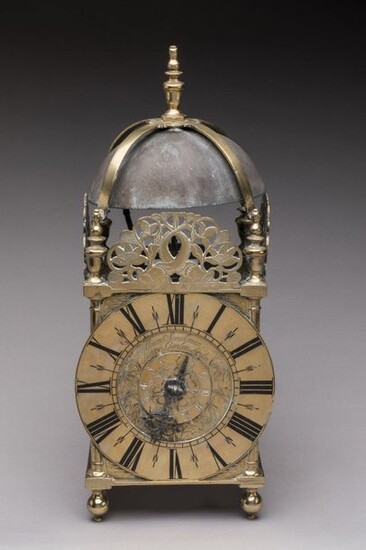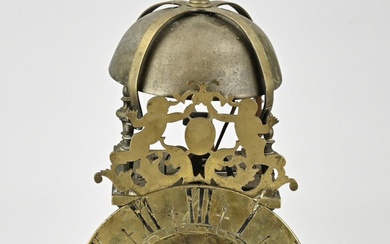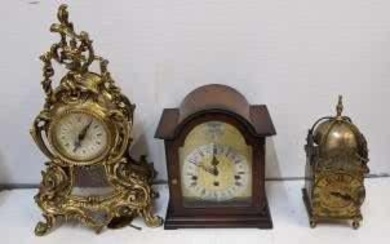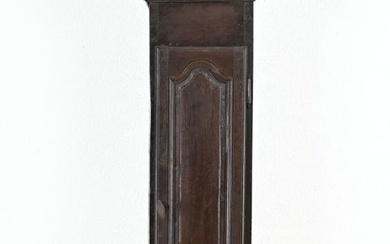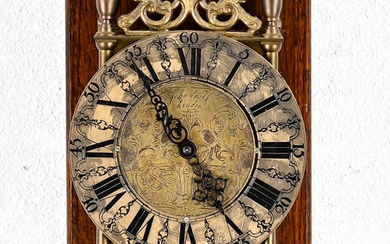LANTERN CLOCK LANTERN in brass, topped by a spinning top supported by four others joined by a spacer above the bell. Each one rests on a Doric column. Three pediments decorated with dolphins with intersecting bodies surrounded by foliage and flowers...
LANTERN CLOCK LANTERN in brass, topped by a spinning top supported by four others joined by a spacer above the bell. Each one rests on a Doric column. Three pediments decorated with dolphins with intersecting bodies surrounded by foliage and flowers. The main dial, decorated with two facing tulips, indicates the hours by Roman numerals alternating with a vegetal decoration, and the minutes are indicated by a railway. The revolving alarm dial, decorated with a blooming flower, shows the hours in Arabic numerals. It rests on four spinning feet. Marked "William Speakman in / Hatton Garden London". English work from the late 17th, early 18th century. Height 39, Width 14.7, Depth 14.7 cm. (as is). Lantern alarm clock by an English horologist from the end of the 17th and beginning of the 18th century. William Speakman is William Colson's apprentice. He was received as master at the Compagnie des Horlogers in 1701. He set up his workshop in Westminster and then in Hatton Garden, where this lantern clock was made, as indicated by the inscriptions on its dial. Speakman's production in particular is fully in line with the British production of lantern clocks. They take their name from their characteristic shape and are the first type of clock to appear in the civil sphere in Great Britain from the end of the 15th century. However, the use of these pieces did not become common until the early 17th century. Automatically translated by DeepL. To see the original version, click here.
[ translate ]View it on
Estimate
Time, Location
Auction House
LANTERN CLOCK LANTERN in brass, topped by a spinning top supported by four others joined by a spacer above the bell. Each one rests on a Doric column. Three pediments decorated with dolphins with intersecting bodies surrounded by foliage and flowers. The main dial, decorated with two facing tulips, indicates the hours by Roman numerals alternating with a vegetal decoration, and the minutes are indicated by a railway. The revolving alarm dial, decorated with a blooming flower, shows the hours in Arabic numerals. It rests on four spinning feet. Marked "William Speakman in / Hatton Garden London". English work from the late 17th, early 18th century. Height 39, Width 14.7, Depth 14.7 cm. (as is). Lantern alarm clock by an English horologist from the end of the 17th and beginning of the 18th century. William Speakman is William Colson's apprentice. He was received as master at the Compagnie des Horlogers in 1701. He set up his workshop in Westminster and then in Hatton Garden, where this lantern clock was made, as indicated by the inscriptions on its dial. Speakman's production in particular is fully in line with the British production of lantern clocks. They take their name from their characteristic shape and are the first type of clock to appear in the civil sphere in Great Britain from the end of the 15th century. However, the use of these pieces did not become common until the early 17th century. Automatically translated by DeepL. To see the original version, click here.
[ translate ]